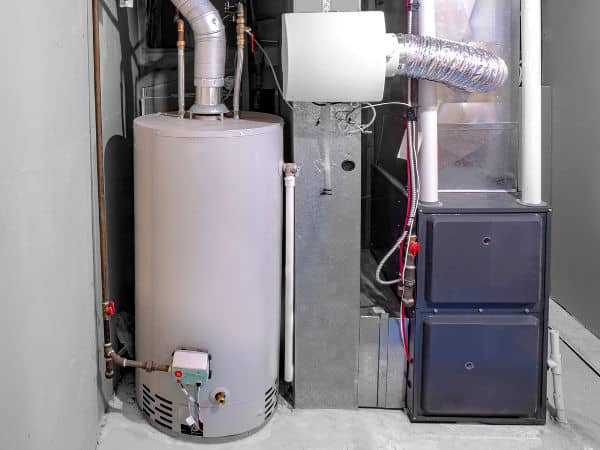How to Maintain Your Home's Hot Water System in Good ConditionKey Advice on Maintaining Your Home's Hot Water SystemHow to Care for Your Home's Hot Water System Effectively
How to Maintain Your Home's Hot Water System in Good ConditionKey Advice on Maintaining Your Home's Hot Water SystemHow to Care for Your Home's Hot Water System Effectively
Blog Article
What're your ideas with regards to How to Maintain a Hot Water Heater in a Few Simple Steps?

Warm water is important for day-to-day comfort, whether it's for a revitalizing shower or cleaning dishes. To guarantee your hot water system runs successfully and lasts longer, routine maintenance is key. This article gives useful tips and insights on how to preserve your home's warm water system to stay clear of interruptions and pricey repair work.
Intro
Maintaining your home's hot water system could seem overwhelming, however with a couple of simple actions, you can guarantee it operates efficiently for years ahead. This overview covers every little thing from understanding your warm water system to DIY maintenance pointers and knowing when to call professional assistance.
Importance of Preserving Your Hot Water System
Routine upkeep not just extends the life expectancy of your warm water system but likewise guarantees it operates effectively. Disregarding maintenance can cause lowered efficiency, greater power costs, and also early failure of the system.
Signs Your Hot Water System Requirements Upkeep
Knowing when your warm water system requires focus can prevent major issues. Watch out for signs such as inconsistent water temperature, unusual noises from the heater, or rustic water.
Recognizing Your Hot Water System
Before diving into upkeep tasks, it's practical to recognize the basic parts of your hot water system. Normally, this consists of the hot water heater itself, pipelines, anode poles, and temperature level controls.
Monthly Maintenance Tasks
Routine month-to-month checks can help catch minor problems prior to they rise.
Purging the Hot Water Heater
Purging your hot water heater eliminates sediment buildup, improving efficiency and extending its life.
Checking and Replacing Anode Rods
Anode poles protect against deterioration inside the container. Checking and changing them when worn is vital.
Checking and Changing Temperature Level Settings
Changing the temperature settings ensures optimal performance and safety and security.
Do It Yourself Tips for Upkeep
You can perform numerous upkeep tasks on your own to maintain your hot water system in top condition.
Checking for Leaks
Regularly evaluate pipelines and links for leakages, as these can result in water damages and higher costs.
Testing Pressure Relief Valves
Testing the stress relief valve ensures it operates properly and prevents extreme pressure build-up.
Protecting Pipelines
Shielding hot water pipelines minimizes heat loss and can conserve energy.
When to Call a Specialist
While do it yourself maintenance is valuable, some problems call for expert proficiency.
Facility Issues Requiring Expert Help
Examples consist of major leakages, electrical issues, or if your water heater is continually underperforming.
Routine Specialist Maintenance Perks
Specialist maintenance can consist of extensive inspections, tune-ups, and making sure conformity with safety criteria.
Conclusion
Routine upkeep of your home's hot water system is crucial for efficiency, durability, and price savings. By complying with these pointers and knowing when to look for specialist help, you can make sure a reliable supply of hot water without unforeseen disturbances.
How to Maintain an Instant Hot Water Heater
Before tinkering with your hot water heater, make sure that it’s not powered on. You also have to turn off the main circuit breaker and shut off the main gas line to prevent accidents. Also turn off the water valves connected to your unit to prevent water from flowing into and out of the appliance. 2. When you’re done, you have to detach the purge valves’ caps. These look like the letter “T” and are situated on either side of the water valves. Doing so will release any pressure that has accumulated inside the valves while at the same time avoid hot water from shooting out and burning your skin. 3. When the purge valves’ caps are removed, you have to connect your hosing lines to the valves. Your unit should have come with three hoses but if it didn’t, you can purchase these things from any hardware or home repair shops. You can also get them from retail stores that sell water heating systems. Read the user’s manual and follow it to complete this task properly. When the hosing lines are connected, open the purge port’s valves. 4. You should never use harsh chemical cleaners or solutions when cleaning your unit. Make use of white vinegar instead. It should be undiluted and you’ll probably use about 2 gallons. 5. Now flush your water heater. This task should probably take about 40 minutes. We can’t give you specific directions for this because the procedure is carried out depending on the type, model and brand of your heater. With that being said, refer to the user’s manual. 6. When you’re done draining the unit, you have to turn off the purge port valves again. Remove the hosing lines that you earlier installed on each of the water valves. Put the valve caps (purge port) back in their respective places and be very careful so as not to damage the rubber discs that are found inside these caps. 7. Now that everything’s back in place, check your user’s manual again to find out how to reactivate your water heating system. 8. Once it is working, turn one of your hot water faucets on just to let air pass through the heater’s water supply pipes. Leave the tap on until water flows smoothly out of it. https://www.orrplumbing.com/blog/2014/september/how-to-maintain-an-instant-hot-water-heater/

I was brought to that article about How to Maintain a Hot Water Heater in a Few Simple Steps from a friend on another web blog. If you liked our page if you please do not forget to pass it around. Many thanks for being here. Return soon.
Visit Site Report this page